Colour in magazines: from 1914
Coloured magazines in Britain date back to 1855, but whereas the Victorians pioneered many aspects of the global periodicals industry, they were slow to expand the use of colour, particularly on popular weekly magazines. Four types of technology have dominated magazine colour printing:- block printing (1850s to 1890);
- chromolithography (1850s onwards);
- photogravure (from 1914, this page);
- offset lithography (from 1960).
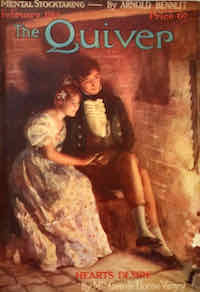 Quiver colour cover, February 1914 |
Quiver (1914)Large A5 monthly |
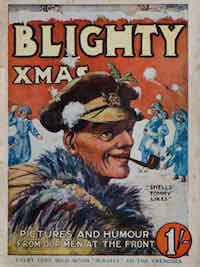 Blighty. Special issue of free magazine for troops sold to raise funds |
Blighty (1916)Christmas special. Large A4 |
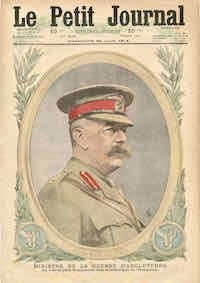 Petit Journal. 25 June 1916 cover marks Kitchener's death |
Le Petit JournalWeekly. Colour supplement format unchanged since 1890 |
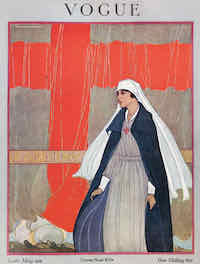 May 1918 Vogue |
Vogue (1916)Twice-monthly Large A4. 1s.Publishing and printing of Vogue moved to Britain because of the wartime blockade by U-boats |
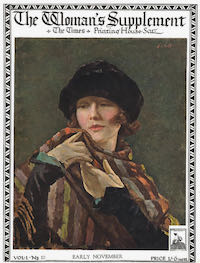 Times Woman’s Supplement, early November 1920 (no. 10) |
Times Woman’s Supplement (1920)Twice-monthly. Large A4. 1s 6dExpensive and short-lived |
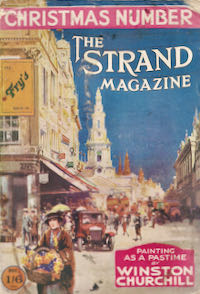 The Strand 1921 December cover artwork was used again in 1922. Note the Covent Garden flower seller |
The Strand (1921)Large A5. George Newnes.Colour covers become a regular feature from 1921. Most picked up details from Covent Garden, where The Strand was based |
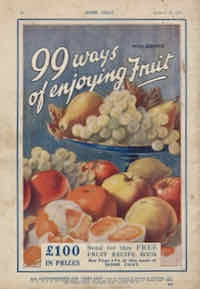 Home Chat, 26 January 1924 back cover colour advertising |
Home Chat 1924Weekly. 2d. Large A5. Three colours used on cover for back-page advertising |
Daily Express (1927)Best-selling daily paper begins a series, Colourful England, in which photographs were printed in a single colour. According to Matthew Engel: ‘When Grove Mill, near Watford, was portrayed in its verdant glory, everything had to be in different shades of green, including the sky. It would take more than half a century to develop the techniques of getting full colour on to large quantities of newsprint produced at speed.’ (Engel, 1997, pp128-9) |
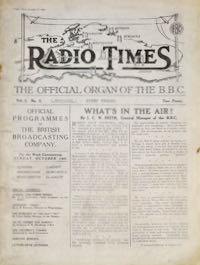 Radio Times typical cover in 1923 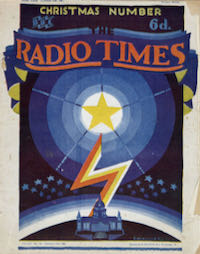 Radio Times Christmas cover in 1926 |
Radio Times (1920s-1930s)Weekly. A4-ish. Radio Times overtakes John Bull as the best-selling weekly. Runs colour covers for Christmas and special issues |
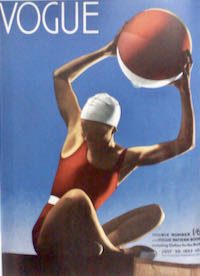 Vogue's first photographic cover |
Vogue’s first photographic colour cover (1932)Twice-monthly Large A4. 1s 6d |
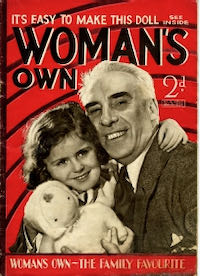 Woman’s Own, 31 Dec 1932. Spot colour cover |
Woman’s Own 1932Weekly. Large A4. 2d. George NewnesTwo-colour covers for new women’s weekly |
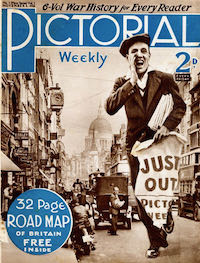 Pictorial Weekly photographic and gravure pioneer |
Pictorial Weekly (1933)Weekly tabloid. 2dSwitched from letterpress printing to two-colour photogravure with photomontages |
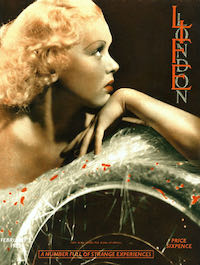 London Life, 1934 cover |
London Life 1934Weekly. 6d. Large A4.High-quality hand-coloured monochrome photographs printed photogravure |
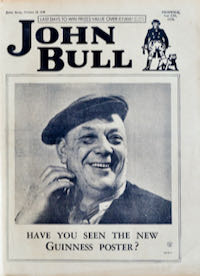 John Bull 1934 monochrome cover dominatyed by advertising |
John Bull 1934John Bull's covers focused on display advertising, with photographs being used by clients siuch as Guinness |
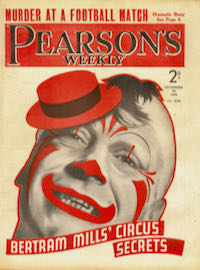 Pearsons Weekly29 December, 1934 |
Pearson's Weekly 1934Large format Tit-Bits rival runs spot colour on photographic covers |
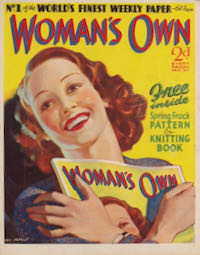 Woman’s Own, 27 February 1937. First colour cover |
Woman’s Own 1937Weekly. Large A4. 2d. George NewnesColour gravure cover and centre spread becomes standard for leading women’s weeklies. Similar application in special interest weeklies such as Wild West Weekly, Modern Wonder and Flying |
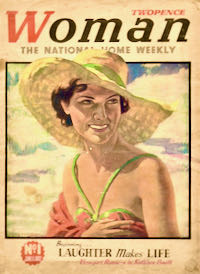 Woman 5 June 1937, first issue |
Woman 1937Large format colour woman's 2d weekly produced at new Odhams printing pant in Watford, Herfordshire |
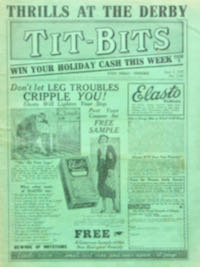 Tit-Bits in June 1881 |
Tit-Bits (1937)Weekly. A4-ish. 2dGeorge Newnes title had barely changed its approach in 50 years |
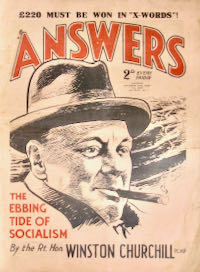 Answers16 October, 1937 |
Answers 1937Large format Tit-Bits rival runs spot colour on illustrated covers |
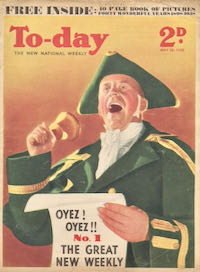 To-day28 May 1938, first issue |
To-day 1938Large format weekly with coloured photographic cover. Closed within months |
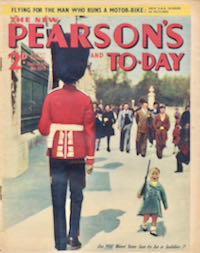 To-day is merged into Pearson's Weekly with 24 September 1938 issue |
Pearson's and To-day 1938Large format weekly with coloured photographic cover. Closed with the advent of World War II |
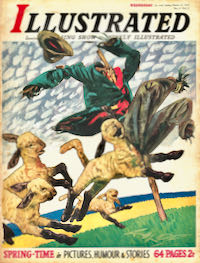 Illustrated18 March, 1939 |
Illustrated 1939Large format colour illustrated covers |
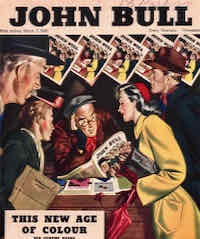 John Bull 1946 cover finally used colour |
John Bull 1946Although ink and paper rationing was still in force, John Bull was able to relaunch in colour for its issue of 2 March 1946. The illustration was by Clixby Watson. This was 10 years after Odhams had built a new factory and installed photogravure colour presses in Watford, where Woman had been printed since 1937 |
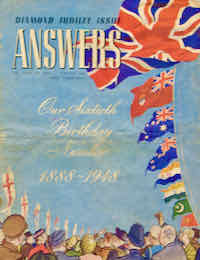 Answers3 September, 1946 |
Answers 1946Large format weekly runs one-off colour illustrated cover to mark its 60th anniversary. |
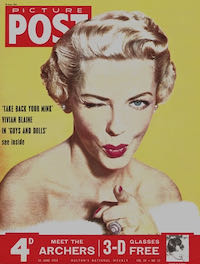 Picture Post, 10 June 1953 |
Picture Post (1953)Large format photojournalism weekly began using covers based on colour photographs, or coloured black-and-white images, in 1952. Colour covers became standard in 1953 but the emphasis switched from photojournalism to royalty and film stars |
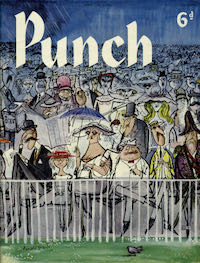 Punch, 13 June 1956, Ronald Searle cartoon |
Punch (1956)Veteran humorous weekly drops famous Dicky Doyle cover for colour cartoons |
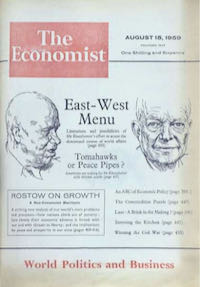 Economist adopts 'redtop' masthead, 1959 |
Economist (1956)Leading typographer Reynolds Stone redesigns titlepiece for veteran economic weekly, reversing white title out of red block |
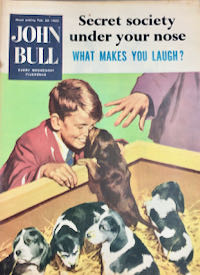 John Bull last issue, 20 February 1960 |
John Bull 1960Last issue of John Bull before relaunch as Today |



